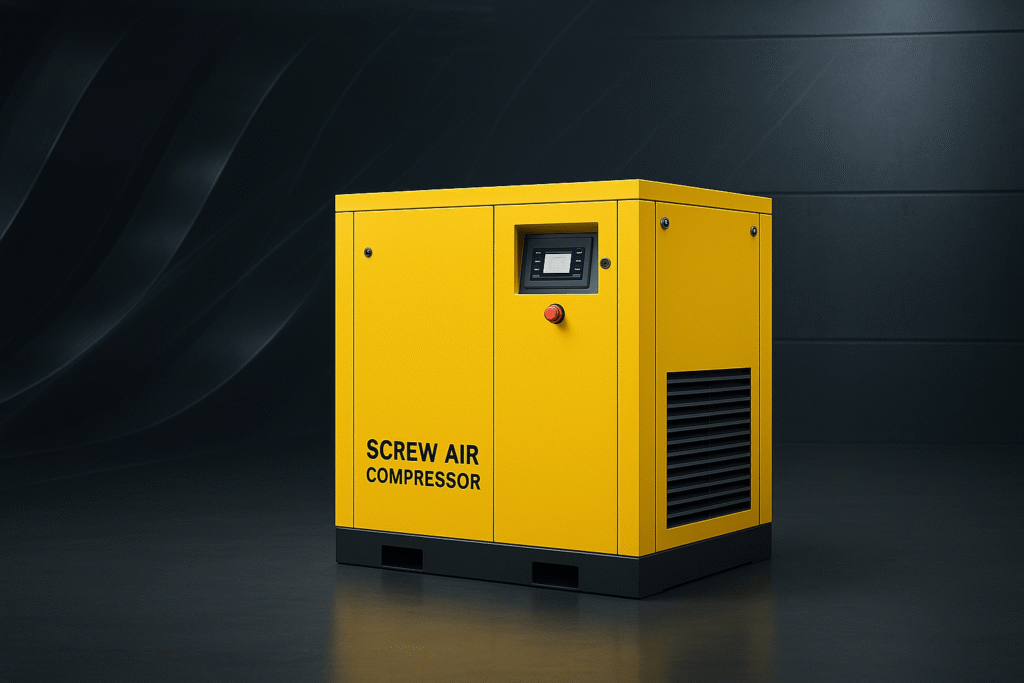Understanding Air Compressors: Essential Data Every User Should Know (1)
At Omenas Air Compressor, we believe that understanding your air compressor’s operation is key to ensuring efficiency, longevity, and reliability. Whether you’re a technician, maintenance expert, or someone new to compressors, knowing the essential operational data can help you prevent issues, enhance energy efficiency, and optimize performance.
In this article, we’ll cover the key data points every air compressor user should remember to improve their understanding of how air compressors function, with insights directly applicable to Omenas Air Compressors.

1. Key Operational Data for the Compressor
Monitoring your compressor’s operational data is crucial for identifying potential problems and ensuring smooth functionality. Here are some essential benchmarks to keep in mind:
a) Compressor Head Outlet Temperature
- Air-cooled Compressors: Should not exceed 95°C.
- Water-cooled Compressors: Should not exceed 90°C.
- Temperatures over 110°C could lead to overheating and trigger automatic shutdowns.
b) Ambient Temperature
- The recommended operating temperature for air compressors is between 0°C and 40°C. Higher temperatures may lead to overheating, while lower temperatures can make the compressor harder to start.
c) Compressor Vibration
- The vibration level of the compressor head should not exceed 7.5 mm/s. Excessive vibration may indicate alignment issues or other mechanical problems.
2. Filter and Oil Separation Data
The filtration and oil separation system is crucial for maintaining the quality of compressed air. Here’s what to look out for:
a) Oil Content in Compressed Air
- After oil separation, the air should contain about 1-5 parts per million (ppm) of oil. Generally, compressed air has around 3 ppm of oil.
b) Filter Maintenance
- Air Filter: Replace the filter when the pressure differential drops below -0.05 bar.
- Filters are highly efficient at capturing particles: 98% of 1-micron particles, 99.5% of 2-micron particles, and 99.9% of 3-micron particles.
- Oil Separator: A new oil separator usually has a pressure differential of around 0.2 bar. When this exceeds 0.8 bar, it’s time for a replacement.
- Oil Filter: The maximum operational temperature should not exceed 120°C, and the pressure should remain within 1.4-2.5 MPa.
3. Cooling System and Other Key Data
a) Cooling Water Temperature Differential
- The temperature difference between inlet and outlet cooling water should be around 15°C. Significant deviations may signal issues in the cooling system.
- The recommended flow rate for cooling water should be at least 3.7 liters per second.
b) Airflow and Power Output
- Air Output Calculation: For every 6 kW of power, the air compressor produces approximately 1 cubic meter of compressed air.
- For reference:
- 1 horsepower (HP) is equivalent to 0.746 kW (Imperial units) or 0.735 kW (metric units).
c) Compressor Oil Characteristics
- The flash point of the compressor oil is 200°C, and its pour point is -20°C, ensuring it remains stable under various temperature conditions.
4. Why Understanding These Data Points is Essential
By knowing these operational benchmarks, you can:
- Maintain Optimal Performance: Regularly monitoring these values helps you ensure that your compressor is running efficiently and prevents unexpected breakdowns.
- Improve Energy Efficiency: By keeping your compressor within these optimal ranges, you can reduce unnecessary energy consumption and lower operational costs.
- Increase Longevity: Proper maintenance based on these benchmarks can extend the life of your air compressor, allowing you to get the most out of your investment.
Conclusion: Enhance Your Compressor Knowledge with Omenas Air Compressor
At Omenas Air Compressor, we are committed to providing high-quality, durable compressors for various industrial needs. Understanding the basic operational data is key to maximizing the performance of your compressor. With regular monitoring and proper maintenance, you can ensure that your Omenas compressor operates at peak efficiency.
If you have any further questions or need more detailed information about your Omenas air compressor, feel free to contact us for expert advice and support.


Hi, this is a comment.
To get started with moderating, editing, and deleting comments, please visit the Comments screen in the dashboard.
Commenter avatars come from Gravatar.